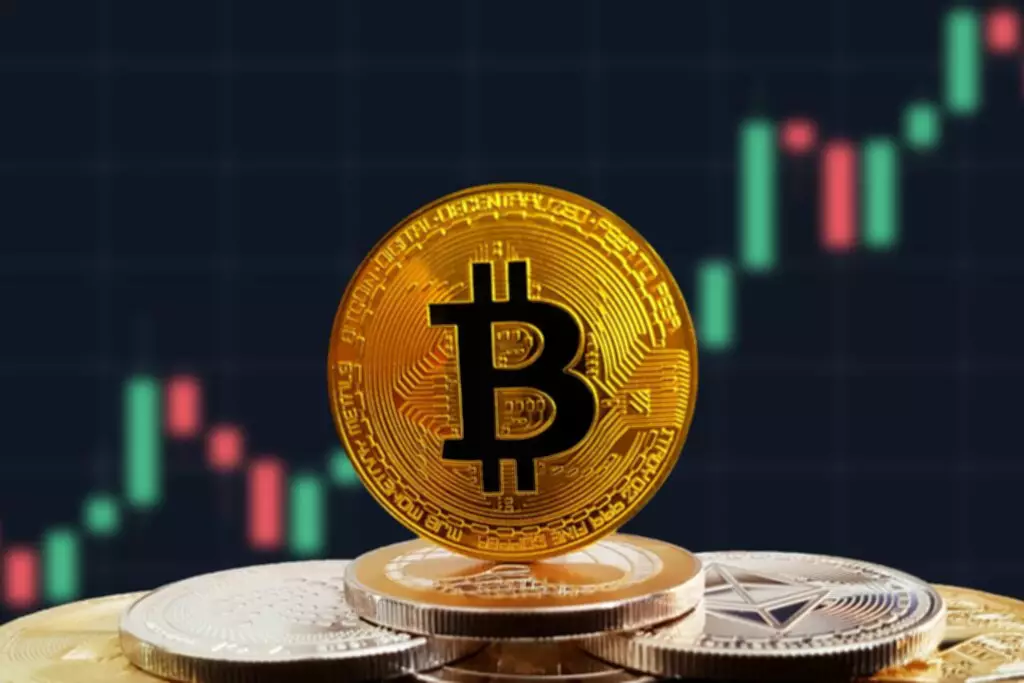Content
- Active Vs Passive Investing: Explained
- Should You Choose Active Or Passive Investing?
- Ways To Save Money During Times Of High Inflation
- Save Time And Make Investing Easy
- Q What Is An Example Of A Passive Investment?
- What Is The Best Betterment Portfolio Strategy?
- Disadvantages Of Passive Investment Strategy:
A good example of passive investing is buying an index fund wherein the fund manager switches holdings based on changing composition of the index being tracked by the fund. The fund strives to match the index return rather than focusing on absolute returns. Active investing, as its name implies, takes a hands-on approach and requires that someone act in the role of a portfolio manager. The goal of active money management is to https://xcritical.com/ beat the stock market’s average returns and take full advantage of short-term price fluctuations. It involves a much deeper analysis and the expertise to know when to pivot into or out of a particular stock, bond, or any asset. A portfolio manager usually oversees a team of analysts who look at qualitative and quantitative factors, then gaze into their crystal balls to try to determine where and when that price will change.
3 Reasons Why Passive Funds Are Seeing More Inflows than Active Funds – PersonalFN
3 Reasons Why Passive Funds Are Seeing More Inflows than Active Funds.
Posted: Mon, 19 Sep 2022 07:00:00 GMT [source]
The offers that appear in this table are from partnerships from which Investopedia receives compensation. This compensation may impact how and where listings appear. Investopedia does not include all offers available in the marketplace. “Passive likely overtakes active by 2026, earlier if bear market.” Investopedia requires writers to use primary sources to support their work. These include white papers, government data, original reporting, and interviews with industry experts.
Active Vs Passive Investing: Explained
Unlike mutual funds, you can buy and sell ETF shares throughout the day, making them more suitable for active traders. Many ETFs track market indexes or industries, letting investors make bets on specific areas of the market. Some use leverage, so their prices experience double or triple the change in an index’s value, letting traders go all-in on their bets. Like mutual funds, ETFs charge management fees that can eat away at active traders’ gains.

Even passive investors who work with an investment manager usually pay fewer fees than those who work with active investment managers. Mutual fundshold a wide variety of stocks and bonds, making it easy for investors to diversify their portfolio while only buying shares in one fund. Many passive investors focus on index funds, which track a market index like the S&P 500 or the stock market as a whole. Index funds tend to be extremely inexpensive, and most major brokerage companies and retirement plans offer them. Exchange-traded funds are like mutual fundsin that they let investors buy and sell shares in multiple businesses while only dealing with a single fund.
Opportunities for active investing are more in the case of small-cap stocks. Again, during market stress, actively invested funds have higher flexibility in adjusting their portfolios to lower the losses. Even active fund managers whose job is to outperform the market rarely do.
Active investors may also be able to notice short-term opportunities, and make a transaction to capitalize. Fees on active investments are higher than those on passive investments because it costs more to actively manage investments. One example of an active investment is a hedge fund, while an exchange-traded fund that tracks an index like the S&P 500 is a passive investment.
This can also help you access tax benefits as the longer you hold an asset, the lower the tax rates may be. Forbes Advisor adheres to strict editorial integrity standards. To the best of our knowledge, all content is accurate as of the date posted, though offers contained herein may no longer be available. The opinions expressed are the author’s alone and have not been provided, approved, or otherwise endorsed by our partners. John Bogle founded the Vanguard Group and before his death served as a vocal proponent of index investing.
Should You Choose Active Or Passive Investing?
Given below is a brief explanation about the two and the pros and cons of each mode of investment. Get stock recommendations, portfolio guidance, and more from The Motley Fool’s premium services. While S&P 500 index funds are the most popular, index funds can be constructed around many categories.
This ability to nimbly react to any potential shifts on the stock market, as well as the rewards a good call can get you truly represent the strong points of active investing. In summary, active investing, when done right, can bring you stellar returns if you pick the right stocks at the right time. Additionally, the more hands-on approach of active investing can really help keep you ahead of the trade winds and bolster your ability to come out on top even in an unfavorable market. Trying to beat the market as opposed to trying to match it isn’t the only difference between active and passive funds. Active investment strategy provides the investors with the benefit of choosing their investments in their portfolio.
Another massive benefit of passive investing is that you’re able to track the market. Well, funds and ETFs aim to track the returns of a particular index if they decide to dedicate them towards one specific index. Generally, the returns compare to the index are very similar. Though active investing can offer short-term gains, it can also be a much more volatile approach to investing and introduces more opportunities for loss. For the average investor, passive investing might work better because of the lower fees and the fact that you don’t have to make decisions about which stocks to buy or sell.
Ways To Save Money During Times Of High Inflation
Most people are probably better off with passive investing, but there’s nothing wrong with designating a portion of your portfolio for experimenting and having fun with active trading. Active investors face the risk of selling their investments at the wrong time or buying in when the market is at a peak. They won’t have to worry about buying or selling at the wrong time and can rely on steady market growthover the long term. Passive investors usually try to track a specific market index or to match the performance of the total market. Typically, passive investors worry more about their long-term gains than short-term profits.
The big limitations of active investing stem from the inherent unpredictability of the market. It is impossible to predict everything and hedge correctly against every danger. Furthermore, the fact that unless you are a big financial institution or a full-time trader, you likely won’t be able to diversify your portfolio properly and protect yourself in that way at least. On the side of actively managed ETFs stands Ark Innovation ETF , with an impressive 5-year return of 48.65% and an expense ratio of 0.75%.
That kind of success would be an achievement of decisive, quick active investors. Then again, a small long-term investment made early will balloon in a few decades. Still, being active with at least a part of your portfolio to try and double what little money you have early in your career can pay off massively. For ease of comparison, if we were to bring down the active fund’s yearly returns to the same 13% —you’d end up with $35.817,50 after subtracting $1,969.65 in fees.

Active investing is investment in actively managed funds or stocks and securities that aims at providing maximum returns to the investors, i.e., more than the benchmark returns. This is based on using various investment strategies and knowing when to enter and exit the market to achieve maximum returns. The risk factor in active investing is quite high and hence, the investors have to be cautious about their investments. It is usually ideal for investors having a high-risk appetite. Some examples of active funds are actively managed mutual funds,futures & options, equities, etc. As discussed above, both actively investing and passive investing have their advantages and disadvantages.
Save Time And Make Investing Easy
Before investing, consider your investment objectives and Titan’s fees. The rate of return on investments can vary widely over time, especially for long term investments. Active investing allows investors to build a portfolio that is customized exactly to their interests, preferences, and passions. It also accounts for personal factors such as risk tolerance as well as goals and return objectives. The performance fee is calculated based on the increase in the net asset value of the client’s holdings in the fund, which is the value of the fund’s investments. For example, an investor might own $1 million worth of shares in a hedge fund, and if the fund manager increases the value by $100,000, the investor would pay $20,000 or 20% of the increase.
- Passive investments such as an index fund generally feature a high number of investors and asset distribution.
- His work has appeared in CNBC + Acorns’s Grow, MarketWatch and The Financial Diet.
- So now that we have a basic understanding or reminder of the definition of passive investing let’s look at its benefits/reasons as to why it’s better than being an active investor.
- They often try to beat the market, earning a higher return than the market as a whole provides.
Passive investing may not generate market-beating returns, which is why it is known to be less lucrative than active investing. Outperforming the market is known to be a difficult task. Traders will have to keep up with price fluctuations constantly to spot the right opportunities. Other strategies take a more relaxed approach, much like riding a bicycle on a picturesque path across the countryside. Either way, it’s important to figure out what approach works best for you. Active and passive investing don’t have to be exclusive, it’s not a club where you’re prohibited from entering if you enjoy the atmosphere in another establishment more.
Passive investing is a more balanced investment approach aimed at matching the broad market performance. Passive investing has a long-term focus and ignores short-term market ups and downs. A passive investor limits the buying Active vs. passive investing and selling activities in his portfolio in response to changing composition in the tracked index to be matched. This is thus a more cost-effective way to invest and avoids short-term temptations or setbacks in price.
Since passive investing does not try to outperform the markets, the investors remain more relaxed and have a longer time horizon for their investments. Passive investing is much cheaper than actively managed funds where an investor has to bear the fee charged by the fund manager for his services. Funds managed using active investment strategy are called active funds. The funds that the investors choose for investment are based on their investment strategy.
Q What Is An Example Of A Passive Investment?
Successful investing is a result of picking the right stock, applying the right investment strategy and maintaining the right discipline. However, for the majority of investors, passive investment stands out as a better option as it is more cost-effective, carries fewer risks, and boasts higher average returns over the long-run. Many active investors buy and sell shares in individual companies. This lets them target specific businesses they think will perform better than the average in the near future.
If you’re a passive investor, you invest for the long haul. Passive investors limit the amount of buying and selling within their portfolios, making this a very cost-effective way to invest. That means resisting the temptation to react or anticipate the stock market’s every next move. Passive investing involves investing over the long term with very limited buying and selling.
What Is The Best Betterment Portfolio Strategy?
The returns through passive investing are a replication of the underlying index or asset or security which the fund tracks for its performance. Some examples of passive investing are ETFs and Index Funds. Fees for both active and passive funds have fallen over time, but active funds still cost more.
Information provided on Forbes Advisor is for educational purposes only. Your financial situation is unique and the products and services we review may not be right for your circumstances. We do not offer financial advice, advisory or brokerage services, nor do we recommend or advise individuals or to buy or sell particular stocks or securities. Performance information may have changed since the time of publication. In active investing, it’s very easy to hop on the bandwagon and follow trends, whether they’re meme stocksor pandemic-related exercise fads.
If they buy and hold, investors will earn close to the market’s long-term average return — about 10% annually — meaning they’ll beat nearly all professional investors with little effort and lower cost. An active fund manager’s experience can translate into higher returns, but passive investing, even by novice investors, consistently beats all but the top players. Many investment advisors believe the best strategy is a blend of active and passive styles, which can help minimize the wild swings in stock prices during volatile periods.
These can include U.S. or foreign government bonds or bonds issued by corporations or municipalities. Many people prefer passive investing for several reasons. Active investors use a variety of assets to execute their trading strategy. There are many reasons people try their hand at active investing.
Optionsallow active traders to make bets on changes in a stock’s price. Options traders buy and sell the right to buy or sell shares at a set price up to a fixed future date. Options let investors leverage their investments, giving them the chance to make massive amounts but also to lose so much they wind up with a negative balance. That makes them suitable only for experienced investors who are willing to take risks. When it comes to mutual funds we’ll look at the Schwab S&P 500 Index Fund and the active Fidelity Contrafund Fund .
